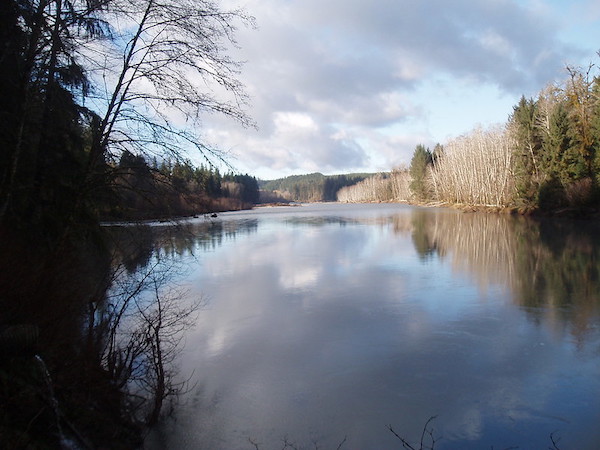
Olympic Park Closes Fishing On Queets, Quinault, Salmon Till June
There will be no sliver of steelheading on a Queets River tributary this season.
Where last December Olympic National Park kept its mile or so of the Salmon open for anglers to target an early-arriving run of hatchery fish for a month, this go-around it’s closed, effective yesterday.

Federal managers made the call Thursday in also announcing that national park portions of the Salmon as well as Queets and Quinault would close to all fishing until June 1, 2023.
“The decision to close these three rivers to recreational fishing is based on a low forecasted return of wild steelhead below the escapement goal of 4,200 fish, chronic low abundances of wild steelhead resulting in the failure to meet the escapement goal in each of the last six years dating back to the 2016-17 season, and projected in-river commercial harvest levels of approximately 19% of the wild run, resulting in an estimated 1,000 fewer adult wild steelhead than expected,” Olympic National Park stated in a press release.
To be clear, that 4,200 figure is state and federal managers’ escapement goal for the Queets; the Quinault Indian Nation uses a much lower figure, 2,600.
WDFW is forecasting 3,958 wild winter-runs back to the Queets this season and had held out hope it might yet come to a fishery agreement with QIN and be able to open the mainstem in conjuction with the park service, given that at the expected runsize and under the statewide steelhead management plan there were some available catch-and-release mortalities for anglers.
But between the tribe’s 46 planned days of netting through March 14 and ONP’s announcement, that door appears to be closed, as unlike the Salmon and the upper Quinault, all of the Queets outside of the lower portion on the Quinault Indian Reservation falls entirely within Olympic National Park jurisdiction.
Meanwhile, the tribe has opened sport fishing for steelhead on its portions of the Queets and Salmon, on which a QIN hatchery operates, through March 23.
WDFW has also stated that a state fishery on the upper Quinault, where the river swerves between national park and state jurisdictions, might open if a fishery agreement can be reached with the tribe.
Park service officials acknowledged that this fall has been “a challenging time for recreational anglers in Olympic National Park.”
They note that first, coastal systems were closed to sport anglers due to a lack of fall rains that left rivers at all-time-low flows, impeding fall salmon spawning migrations and making fish more vulnerable to concentrated harvest.
And then when the rains did finally arrive in late October and most park rivers were able to reopened for fishing, the Queets and Salmon were kept closed “due to higher than expected harvest levels of Fall Chinook salmon.”
That occurred during an inriver QIN commercial fishery that was shut down early.
“Fisheries within Olympic National Park are managed to provide diverse fishing opportunities, allow for the harvest of hatchery steelhead, and preserve wild salmonid populations. The National Park Service appreciates the cooperation and understanding of recreational anglers and guides during this time,” ONP stated.
Where there might have been hope that park officials would open the Salmon, WDFW, in its coastwide winter fishing rule change notice issued earlier this week, stated that the river had closed in early October and it would remain shut down “until further notice,” not even leaving room for a fishery directed at hatchery steelhead on the two small stretches of state-managed water.

The agency also kept closed Grays Harbor tributaries that see high numbers of harvestable late-returning hatchery steelhead, spurring anger from sport anglers who had hoped to see terminal areas opened. WDFW explained that the Quinaults had communicated “extremely clearly” an intention to protect wild returns as much as possible in the Chehalis Basin, where runs have also been below escapement for several years. Still, a 16-day coho-directed fishery is open now on the Humptulips and lower Chehalis. Wild steelhead mortalities are expected to be five or fewer.
National park officials also noted in their press release that Olympic Peninsula steelhead are the subject of an Endangered Species Act listing petition, filed in early August and which kickstarted a 90-day review on whether it is warranted or not. A National Marine Fisheries Service official did not respond to a request for a status update earlier this week, but earlier pointed toward nine petitions on federal overseers’ collective desk and the three-month goal was “to the maximum extent practicable.”

